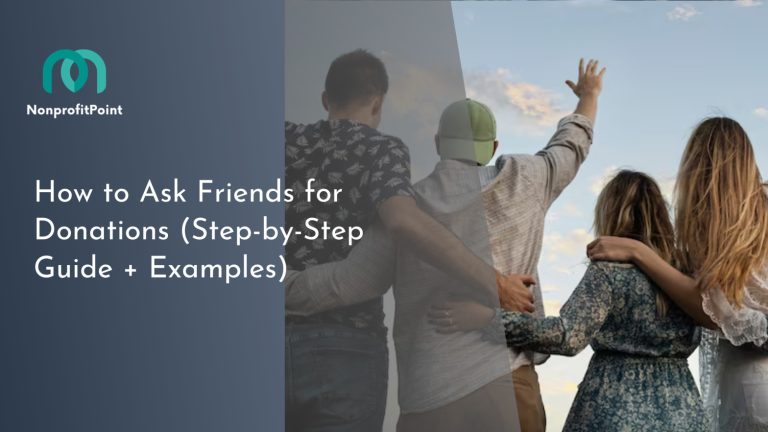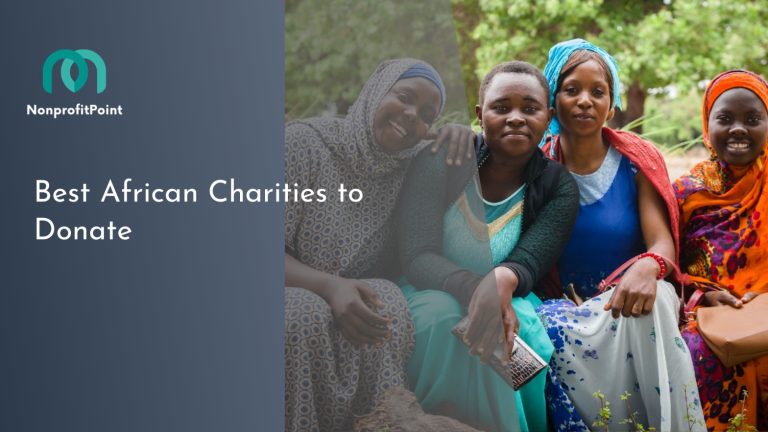Face-to-Face Fundraising: Why It Works Best for Nonprofits
In today’s digital world, online fundraising is the norm for almost all non-profit organizations. After all, it’s easy and cost-effective. All you need is a website, social media accounts, email campaigns, and a trusty CRM to keep track of your donors. Right? Well… Kind of. While online fundraising has its pros—like no overhead costs and quick results—it also has cons.
Namely that you can’t see your audience cry or laugh as they watch your get video or read your article on their computer screen. You can’t smell their cologne or feel their hands shake as they write out that first check to support your cause.
And because there’s not much interaction with your donors, you won’t know if they are not interested in giving again until they file taxes next year. Read on to understand why face-to-face fundraising still remains the most effective way for nonprofits to raise money – and how you can put these tips into practice at your charity.
5 Face to Face Fundraising Techniques for Charities
Fundraising is not just about asking for money, it’s about getting creative and coming up with new ways to keep your organization in the public eye so that you can continue supporting your cause through fundraising efforts. Whether you’re an experienced fundraiser or just getting started, incorporating face-to-face techniques into your strategy can help give your fundraising campaign a boost.
The personal connection of in-person interactions makes people more willing to open their wallets and support your organization. These face-to-face techniques are more effective than traditional fundraising techniques for many reasons:
Ask With Confidence

The most important part of any face-to-face fundraising campaign is building confidence. If you don’t feel comfortable asking people for money, then no amount of planning or script-following will help. To gain confidence and build skills in fundraising, start small. Volunteer at your local animal shelter or host a bake sale with your friends and family. Build the skills you need to succeed in the face-to-face world by asking people for support in non-threatening, low-stakes environments. Once you’re comfortable asking for small donations and support, graduate to larger campaigns. Find a cause you believe in and get out there to help them succeed.
Host an Event

Hosting an event is a great face-to-face fundraising method. Look for events that are accessible and affordable for your organization, but also have a high return rate. A good example of this is a bake sale. Once you have the ingredients, all you need to do is set up your table and watch the profits roll in. Events that are active are also good for building community and engaging your donors. Examples include games, sports, and competitions.
Go Door-to-Door

The best way to reach new donors and engage with current supporters is with direct face-to-face contact. There is no better way to do this than by going door-to-door. This is a great way to reach people you don’t have the resources to reach otherwise. You can also target specific areas and demographics that your organization needs support from, like high-income families or specific age groups.
Door-to-door fundraising campaigns often require a large group of volunteers. You can either organize your own group or hire a company to do the work for you. If you choose to hire out, make sure to check references and select a reputable company. You don’t want your donors to feel harassed or pressured by your fundraising activities.
Send Out Mailing Cards

If you live in a densely populated area, then going door-to-door might not be the best option. In this case, consider mailing cards to your donors and those in your area who might be interested in supporting your cause. Mailing cards are great for increasing name recognition and reaching people who may not be comfortable with face-to-face interactions. Plus, with mailing cards, you can ask for donations of any size.
Phone Fundraising
Phone fundraising is a great way to reach donors and prospective donors who aren’t comfortable with face-to-face or in-person interactions. If you’re going to do phone fundraising, make sure to follow a script and be careful not to put off your potential donors.
3 Reasons Why Face-to-Face Fundraisers Can Win Over Donors
Donors feel like their money is going towards a specific goal
When donors are able to see where their money is going, it makes them more likely to give. Face-to-face fundraising allows fundraisers to show donors exactly where their donations will go, which makes them more likely to give.
Donors are able to see the need for their donations
When donors see the need for their donations, they are more likely to give. Face-to-face fundraising allows fundraisers to show donors the need for their donations, which makes them more likely to give.
Donors are able to see the impact of their donations
When donors can see the impact of their donations, they are more likely to give. Face-to-face fundraising allows fundraisers to show donors the impact of their donations, which makes them more likely to give.
Now let’s look at some of the top benefits of why your charity should be doing face-to-face fundraising.
4 Benefits of Face-to-Face Fundraising
1. You Can Develop Stronger Relationships with Your Donors
When you ask for money over the phone, you might have a nice conversation, but it’s hard to have a real connection. If the person on the other end of the line doesn’t want to donate, they can easily say no thanks and hang up. But when you meet face-to-face and they have to look you in the eyes and politely turn you down, it makes them feel bad. They might feel guilty or bad about saying no and want to make it up to you. This is when you’ve developed a real relationship with someone. If you want loyal donors who will give more generously year after year, then you need to develop strong relationships with them. Meeting with prospective donors one-on-one is the best way to do that.
2. It Builds Trust and Reputation for Your Organization
Trust and reputation are two of the most important aspects of successfully fundraising for your nonprofit. When donors give to a nonprofit, they expect to see their money go towards a worthwhile cause. But they also want to see that the organization is transparent, efficient, and accountable. Meeting face-to-face with donors lets them see that you are trustworthy, efficient, and accountable. It also shows that you’re committed to what you do. And when donors see that you’re as dedicated to them as you are to your cause, it can help build trust and a positive reputation for your nonprofit.

3. It Shows People You’re Committed to What You Do
In an age of fake news and clickbait, donors want to know that the organizations they support are authentic and sincere. Meeting face-to-face with donors can help you show donors that you’re committed to what you do. For example, if a donor wants to know how their money will be spent, you can share your nonprofit’s budget and how their donations will be used. When you meet face-to-face with donors, you have the opportunity to show them that you’re committed to what you do.
4. Face-to-face fundraising can be more efficiently tracked and measured.
Face-to-face fundraising is more efficient, which means you can better track and measure your progress. With online fundraising campaigns, it can be hard to determine if they’re succeeding. After all, there’s no way to tell if someone who clicks the donate button is a new or returning donor. And even if they are new donors, it’s hard to tell how much money they gave and when. But when you’re fundraising face-to-face, everything can be tracked and measured. You can easily keep track of who you visited, when, and how much money you raised. This allows you to more effectively track your progress and make necessary adjustments.
5 Tips to Make Face-to-Face Fundraising Even More Effective
If you want to make face-to-face fundraising even more effective, here are a few tips you can follow:
# Tip 1:
Make sure donors are prepared for the experience. While donors want to feel like they are getting something out of their donations, it’s also important that they know how to handle the pressure that can come with face-to-face fundraising.
# Tip 2:
Make sure your fundraisers are prepared for any situation that may come up and are able to handle it appropriately. This will help them win over donors and make them more likely to give.
# Tip 3:
Make sure donors feel welcomed – Nothing is more unappealing than a person trying to sell you something.
# Tip 4:
Make sure donors feel welcomed and appreciated for coming to your event or house party by your fundraisers. This will make them more likely to give and keep coming back.
# Tip 5:
Make sure donors are thanked – The best fundraisers know that it’s not all about them. Make sure your fundraisers are thanking donors for coming to their events and supporting your cause. This will make donors more likely to give and keep coming back.
Final Thoughts
Face-to-face fundraising is the most effective way to raise money for a few reasons: it offers donors the ability to see themselves supporting a cause, it allows people the chance to connect emotionally with each other and the nonprofit, and it is a memorable experience that creates lasting impressions.
There are a few ways that face-to-face fundraisers can win over donors and make them more likely to give. It’s important to make sure donors are prepared for the experience, make sure donors feel welcomed, and make sure donors are thanked for their donations. Meeting face-to-face also builds trust and reputation for your organization, shows donors you’re committed to what you do, and can more efficiently be tracked and measured. So if you’re looking for a more effective way to raise money for your nonprofit, consider holding more face-to-face fundraisers.






